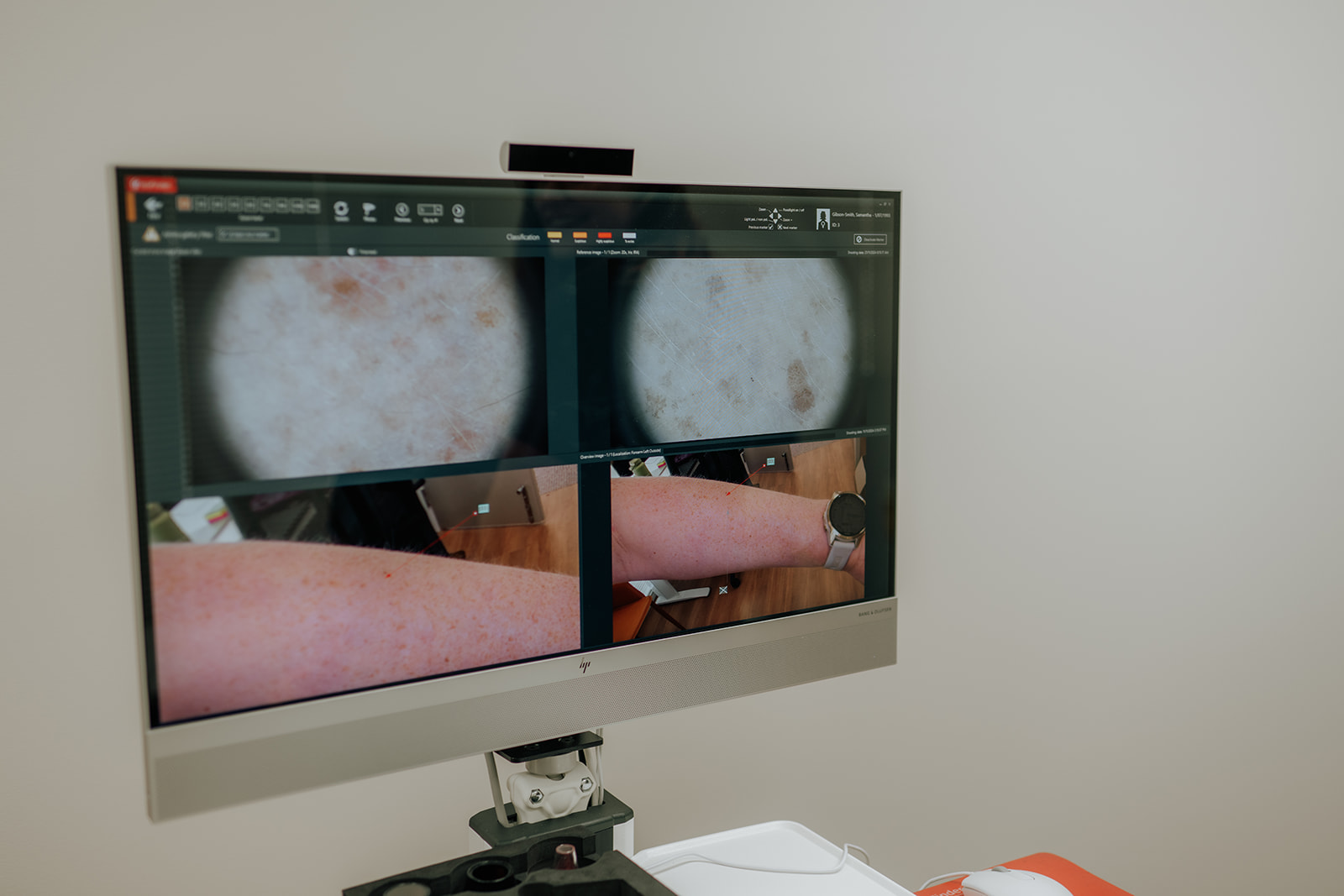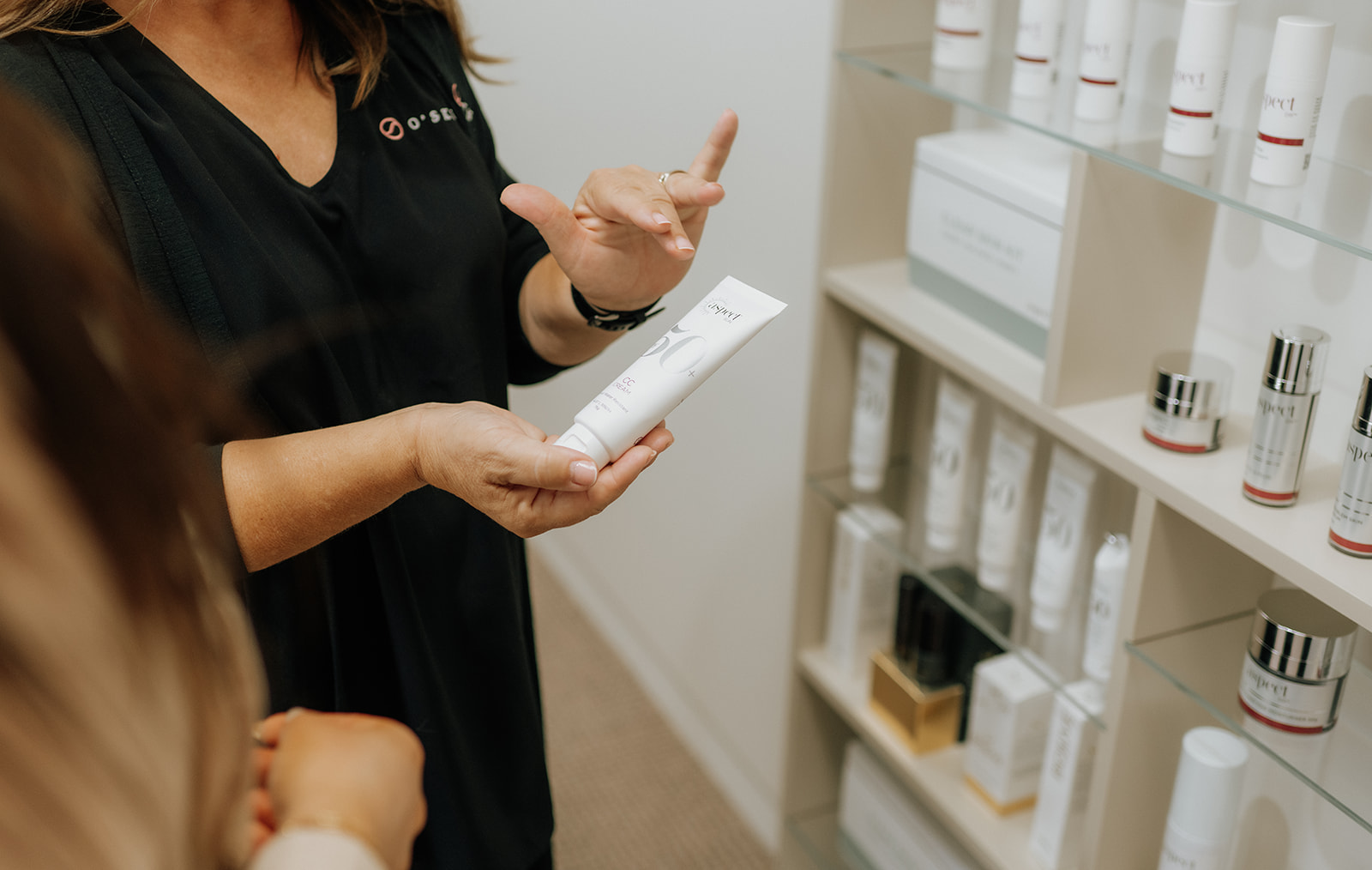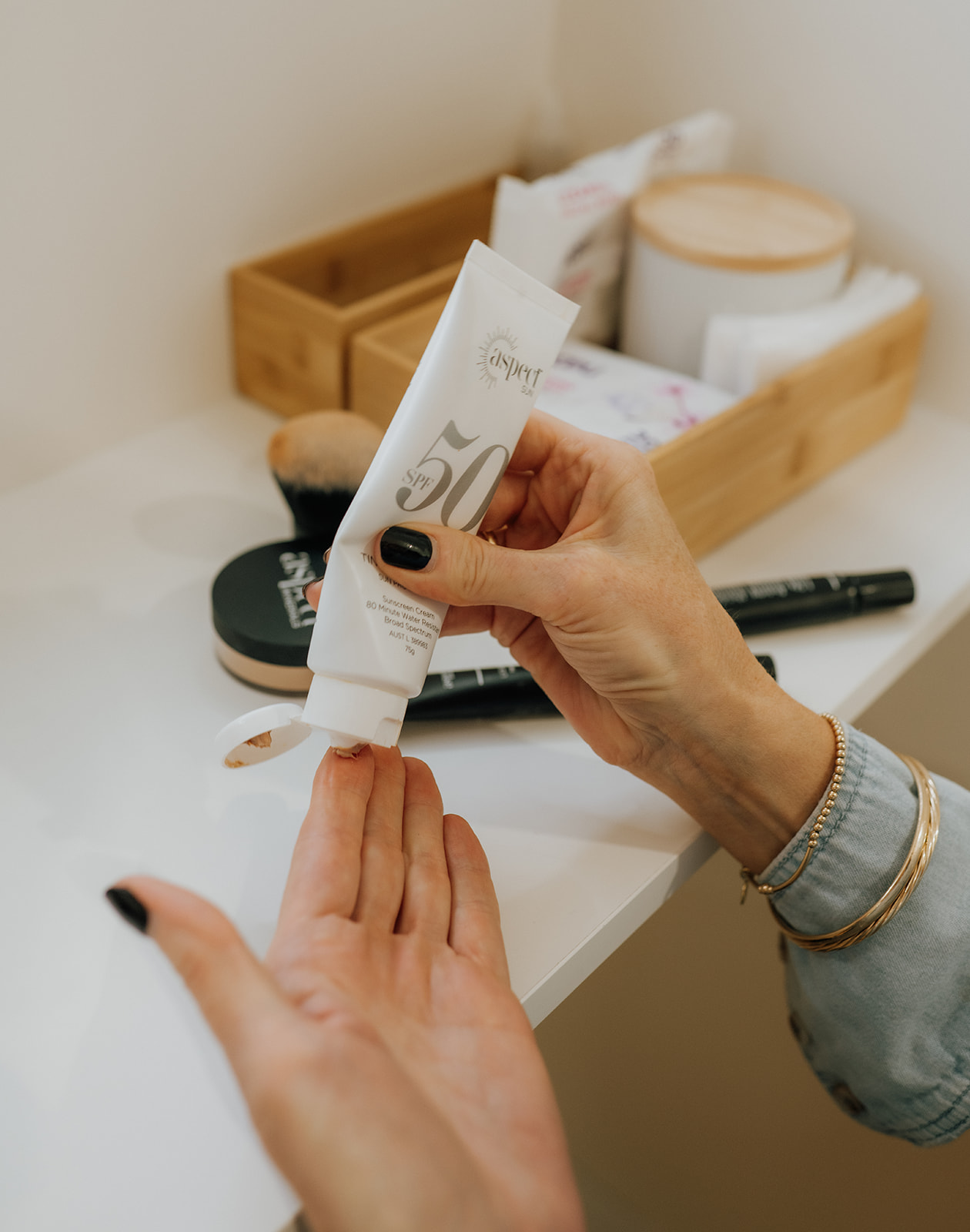Skin Cancer Checks
At O’Skin Medical, Drs. Amy O’Brien and Samantha Gibson-Smith offer professional and thorough skin cancer checks to ensure your skin health is managed with care and expertise. Amy and Sam are both experienced doctors specialising in skin cancer management. They offer personalised care with clear, actionable advice and have access to a wide range of advanced treatment options. You can book an appointment directly – no referral is necessary.

What we offer
Full Skin Checks
Full skin checks are the most comprehensive skin check option. Your experienced professionals thoroughly examine your skin from head to toe, identifying any concerns such as moles, spots, or changes that may need attention. We address skin issues you have mentioned during the consultation and discuss any areas of concern that were found during your skin check. A plan is made to target these issues with surgical or nonsurgical interventions, skin care advice, and follow up to ensure the outcome if reached.
Regular skin checks are vital for early detection and prevention of skin conditions, including skin cancer.
Limited Skin Checks
Limited skin checks are available for patients who wants to address an area of concern or requests a targeted assessments for specific regions of the body. This may be a concern about a sun exposed
area such as the face, or reviewing a person’s back which they cannot see, but have a concern about.
Single Spot Checks
Single spot checks are a brief appointment where you require a focused evaluation of specific lesion of concern, such as a mole or spot on the skin that has changed.
How it works


Initial Consultation
Your initial consultation is usually your skin check appointment where issues have been identified. Occasionally a skin cancer or precancerous change has been identified during an appointment such as an aesthetic or laser consult, or you have have been referred from another skin cancer clinic for specific treatment offered at O’Skin.
Treatment
At O’Skin there are several treatment options available for skin cancer and precancerous change. This includes the following:
- Surgical Interventions:
- Biopsies to confirm diagnoses.
- Excision of suspicious or malignant lesions.
- Nonsurgical Treatments:
- Sun protection and skincare advice.
- Cryotherapy for certain lesions.
- Prescription creams like 5-fluorouracil, imiquimod, or compounded products.
- Photodynamic Therapy (PDT):
- Daylight PDT: Convenient and less invasive.
- Conventional PDT: Clinic-based, effective treatment.
- Laser-Assisted PDT: Advanced option for specific cases.
Aftercare
You will be given detailed instructions on how to care for yourself as you recover following any intervention provided at O’Skin, whether you have had a surgical procedure, have been advised to use medical creams to treat lesions or have undergone PDT.
Important Information
Skin cancer is a major health concern in Australia due to the country’s high levels of UV radiation, largely attributed to its geographic location, sunny climate, and outdoor lifestyle. Australia has one of the highest rates of skin cancer in the
world., with over 16,000 melanomas diagnosed annually and more than 1 million basal cell carcinoma (BCC) and squamous cell carcinoma (SCC). Two in three Australians will be diagnosed with some form of skin cancer by the age of 70. Early detection is vital, and we recommend self-examine skin regularly and seeing O’Skin for any suspicious spots.


Aftercare Information
Following a surgical procedure it is important to rest and keep the wound dry for several days. This minimises the risk of bleeding and infection, allowing the wound to heal as quickly as possible and with minimal scarring.
Aftercare while undergoing nonsurgical interventions vary, depending on what treatment you have undertaken. General advice usually involves following the instructions given to you at the time of treatment, avoiding sun exposure for the treatment period and then protecting your skin with sunscreen (SPF 50+) for several weeks following afterwards. Allow your skin to heal without picking or scratching, using products advised to aid in the process.
Written instructions will be provided for any procedure undertaken at O’Skin.
Frequently asked questions
How long does a skin check take?
A standard full skin check typically takes 30 minutes. Limited and single spot checks are available and usually take 10-20 minutes.
How often should I get a skin check?
This depends on your risk factors. The Australian Guidelines do not recommend annual skin checks for general surveillance but encourage patients to self-monitor and present with any concerns. People with a history of skin cancer or high-risk factors may require frequent visits.
What are the warning signs of skin cancer?
Look out for new moles and spots that have an irregular shape or uneven colour. It’s also important to monitor sores that don’t heal, red, scaly patches or lumps on the skin. You are welcome to contact O’Skin for an appointment to review these lesions. It is important to mention that you have a specific spot of concern so we can expedite your appointment.
What is the best way to prevent skin cancer?
Australia has the highest rates of skin cancer in the world. Protect yourself by wearing broad-spectrum sunscreen daily (SPF 50+), seeking shade and avoiding peak sun hours , wearing protective clothing, hats, and sunglasses and performing regular self-checks. If you have any concerns on your skin, then make an appointment to see a doctor with an interest in skin cancer.
What happens if a suspicious mole is found?
If a suspicious lesion is detected, your doctor may perform a biopsy or excision. If skin cancer is confirmed, treatment options will be discussed, including excision, or other nonsurgical treatments.
Will I have a scar after skin cancer removal?
Scarring is inevitable when excising a lesion, but our doctors aim to minimise this by using precise techniques. Post-treatment care can also help improve healing.
Can you check moles for cosmetic concerns as well?
Yes, we can assess moles for both medical and cosmetic reasons. If removal is for cosmetic purposes, it will not be covered by Medicare.